The Honda CR-V has cemented its place as a top-selling compact SUV for good reason. For nearly three decades, Honda’s rival to the Toyota RAV4 and a plethora of other crossovers has consistently evolved, incorporating fresh styling, updated technology, and, importantly, a fuel-efficient hybrid option in recent generations. For those prioritizing a dependable and comfortable daily vehicle with impressive gas mileage, the hybrid variant, boasting upwards of 40 mpg according to EPA estimates, significantly enhances the CR-V’s appeal.
The 2025 CR-V Hybrid remains largely unchanged from the previous year, continuing the successful formula of the sixth-generation model introduced in 2023. This current generation shares Honda’s HA platform and interior design with the eleventh-generation Civic. While the standard, non-hybrid CR-V utilizes a 190-horsepower turbocharged 1.5-liter engine across three trims, the CR-V Hybrid steps up with a more powerful 2.0-liter two-motor hybrid system, also available in Sport, Sport-L, and Sport Touring trims. Each higher trim level adds more features, including leather interiors, wireless charging (Sport-L and above), and a premium Bose audio system (Sport Touring), without significant alterations to the vehicle’s appearance.
If you’re seeking a concise summary of the 2025 Honda CR-V Hybrid, consider this: Honda sold over 400,000 CR-Vs in the U.S. alone last year. This popularity is no accident. The CR-V Hybrid’s winning combination of practicality, fuel efficiency, and refinement has minimized the need for major changes in recent years, and sales continue to climb. In January 2025 alone, over 27,000 CR-Vs were sold, with hybrids accounting for half of those sales. Simply put, it’s an excellent vehicle in a competitive segment.
In a crowded market like compact SUVs, it’s easy to assume all models are virtually identical. However, closer examination reveals subtle yet significant differences. The CR-V’s strength lies in Honda’s decades of refinement across six generations, resulting in a polished and well-rounded vehicle.
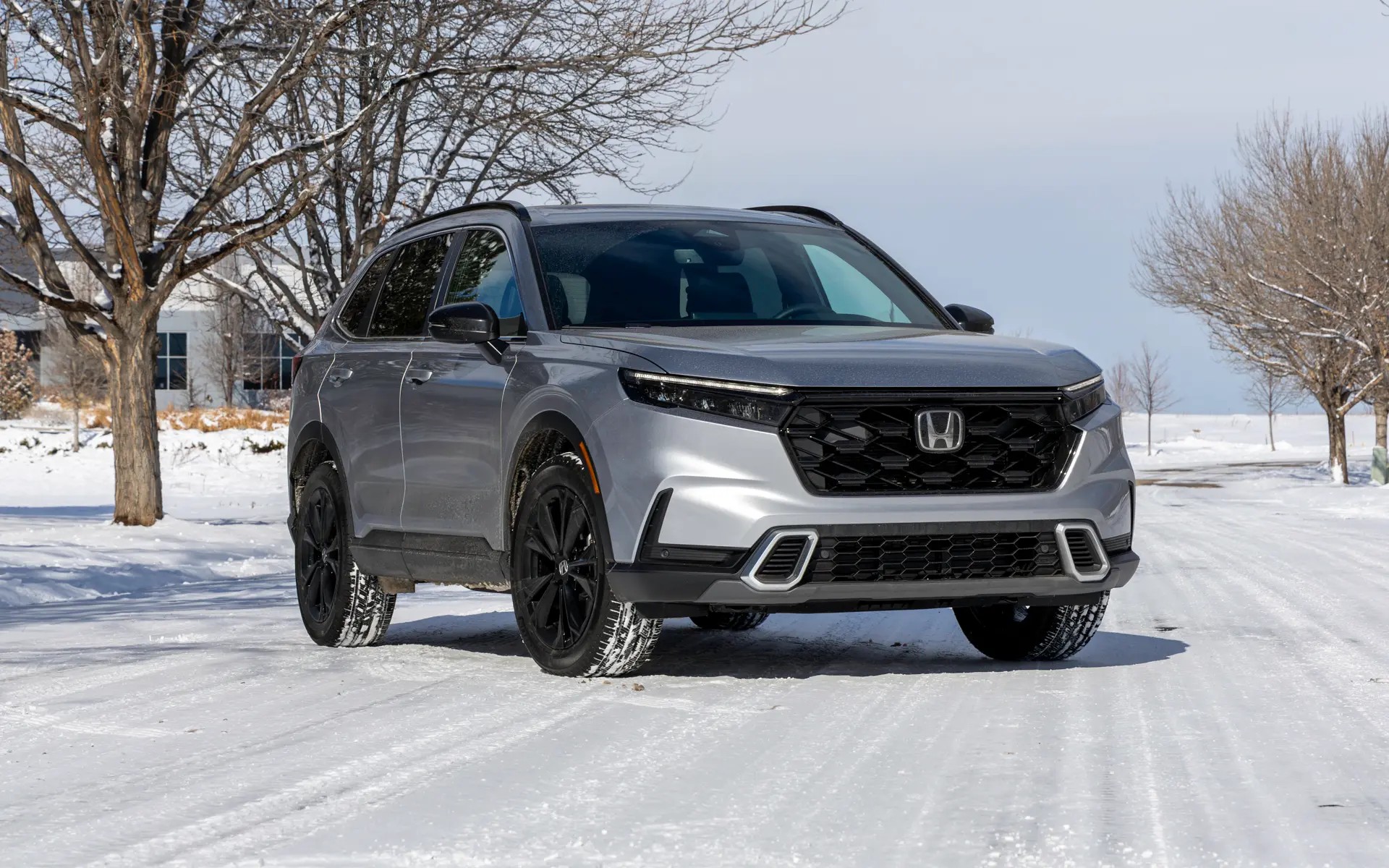 Honda CR-V Hybrid Winter Review exterior front
Honda CR-V Hybrid Winter Review exterior front
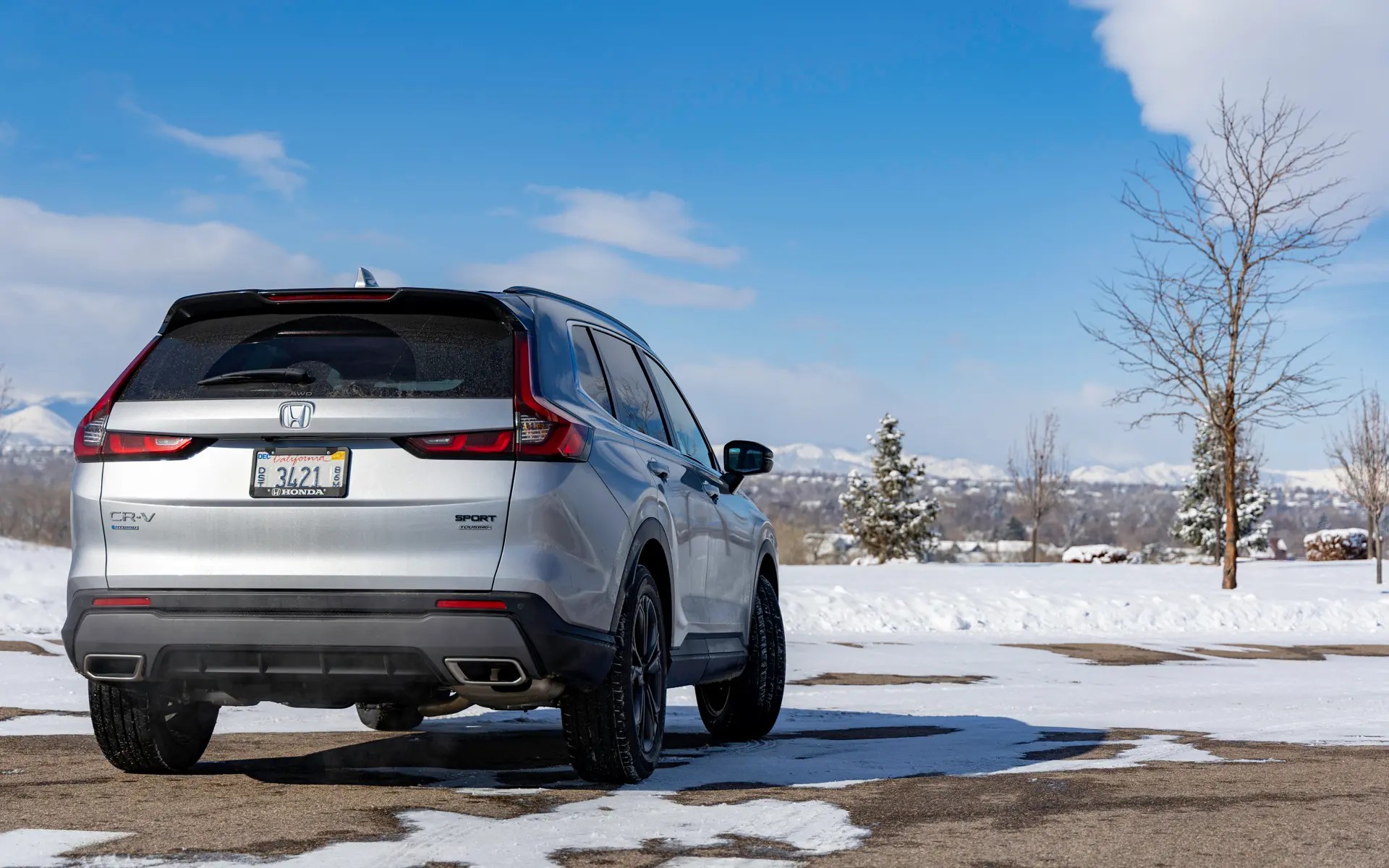 Honda CR-V Hybrid driving on snowy road
Honda CR-V Hybrid driving on snowy road
Efficiency and Performance of the CR-V Hybrid: A Practical Daily Driver
The CR-V Hybrid largely excels in both fuel efficiency and everyday performance. With widespread winter conditions providing ample opportunity to evaluate the “Real Time AWD with Intelligent Control” system, the 2025 Honda CR-V Hybrid, similar to its non-hybrid counterpart, employs a mechanical all-wheel-drive system. This system transfers power from the front to rear axle as needed, a notable distinction from the Toyota RAV4 Hybrid, which uses a dedicated electric motor to power the rear wheels without a mechanical connection. While not employing Honda’s advanced i-VTM4 system found in larger models like the Passport and Pilot, the CR-V Hybrid’s AWD promises responsive handling in slippery conditions.
Despite performing less impressively in specific slip tests, the CR-V Hybrid’s AWD system proved competent in real-world snowy conditions. While not designed for serious off-roading, the system, coupled with traction control and all-season tires, provided confident handling during everyday winter driving, without requiring dedicated winter tires.
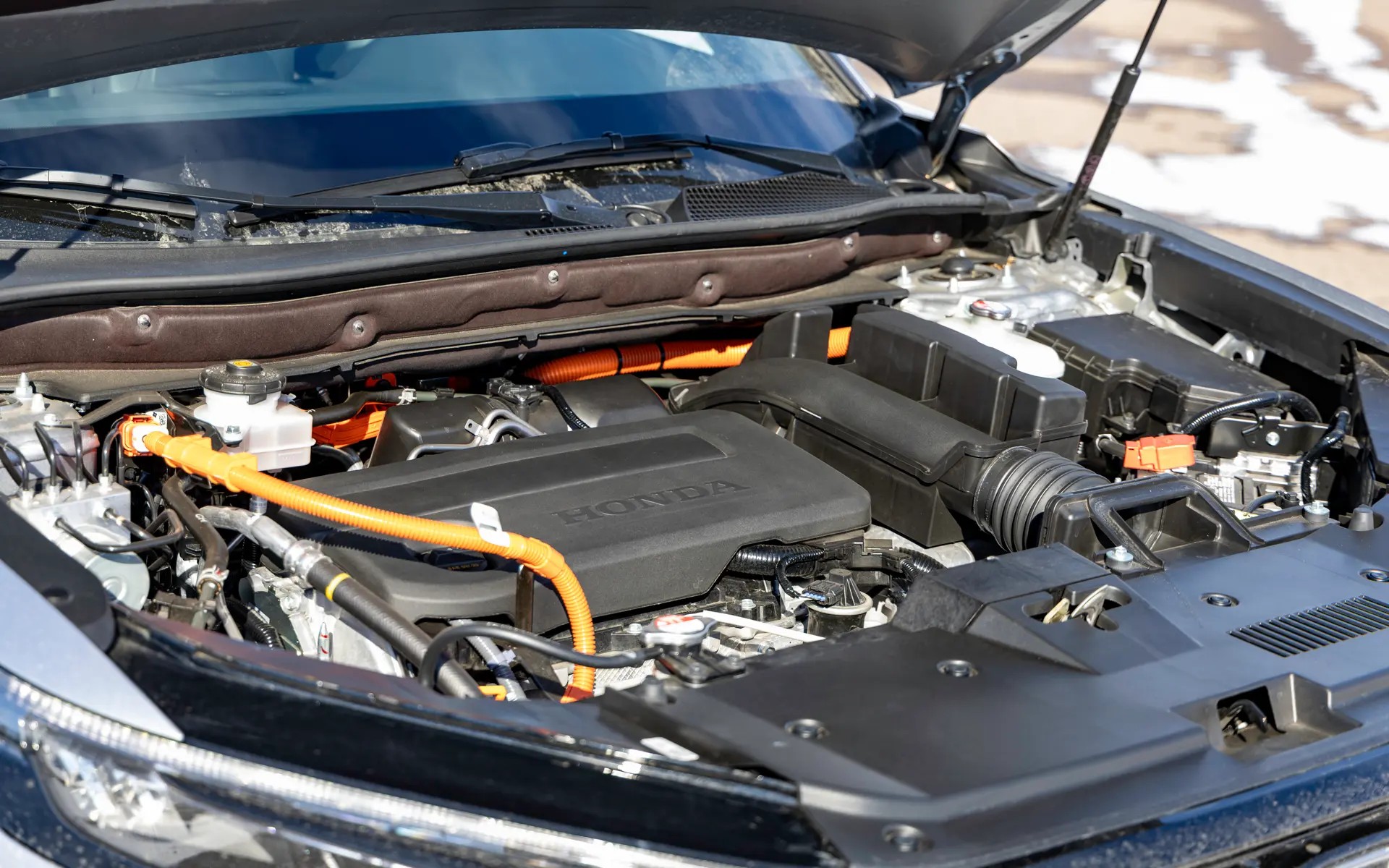 Honda CR-V Hybrid driving on snow covered road
Honda CR-V Hybrid driving on snow covered road
The hybrid powertrain, combining a 2.0-liter naturally aspirated engine with two electric motors, delivers a combined 204 horsepower. While not offering exhilarating acceleration, with a 0-60 mph time of around 8 seconds, the CR-V Hybrid provides adequate power for daily driving. Compared to rivals like the more powerful Mazda CX-5/CX-50 and Hyundai Tucson Hybrid, the CR-V Hybrid prioritizes fuel economy. EPA ratings range from 37 to 43 mpg, and real-world city driving yielded figures in the mid-to-upper 30s. This balance of acceptable performance with excellent fuel efficiency is a key strength of the CR-V Hybrid.
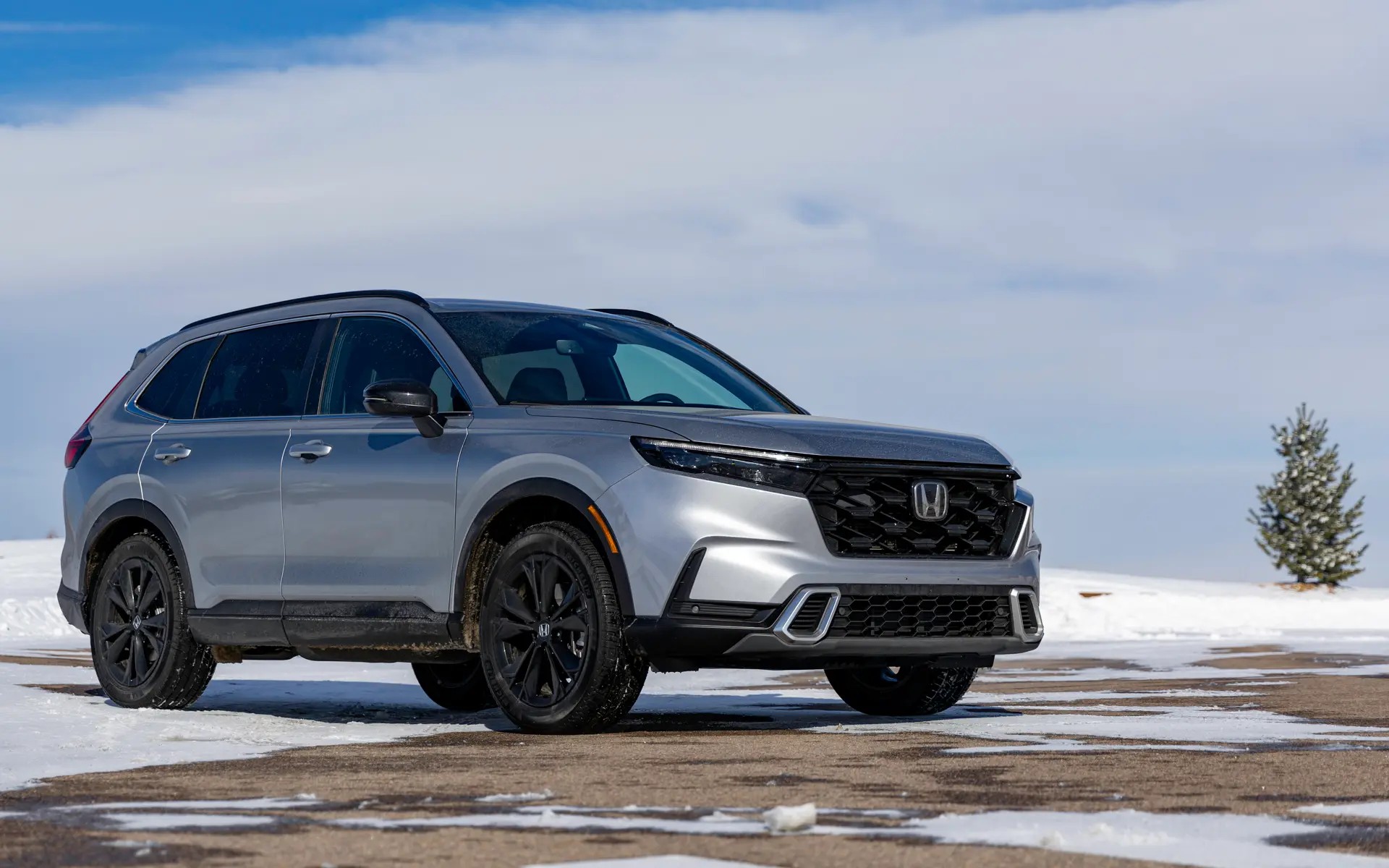 Honda CR-V Hybrid front view in winter setting
Honda CR-V Hybrid front view in winter setting
Ride Comfort and Refinement: Smooth and Quiet
Beyond fuel efficiency, the 2025 Honda CR-V Hybrid provides a comfortable and refined driving experience for both driver and passengers. While the hybrid system involves the engine switching on and off, these transitions are remarkably smooth and barely noticeable during normal driving. In fact, the transitions feel arguably smoother than in the Toyota RAV4 Hybrid. Engine noise is also well-controlled, remaining unobtrusive unless under hard acceleration.
Overall, the Honda CR-V, in both hybrid and gasoline versions, offers a smooth and quiet ride without sacrificing a connected feel to the road. While both powertrains offer similar levels of responsiveness, the hybrid naturally excels in fuel economy.
Regarding towing capacity, the CR-V is typical of the compact SUV class, meaning it’s not really designed for heavy towing. Non-hybrid CR-Vs can tow up to 1,500 pounds when properly equipped, but the CR-V Hybrid’s towing capacity is reduced to a modest 1,000 pounds. This is less than the Toyota RAV4 Hybrid, which is rated for 1,750 pounds, even surpassing the gas-powered RAV4 in towing capability.
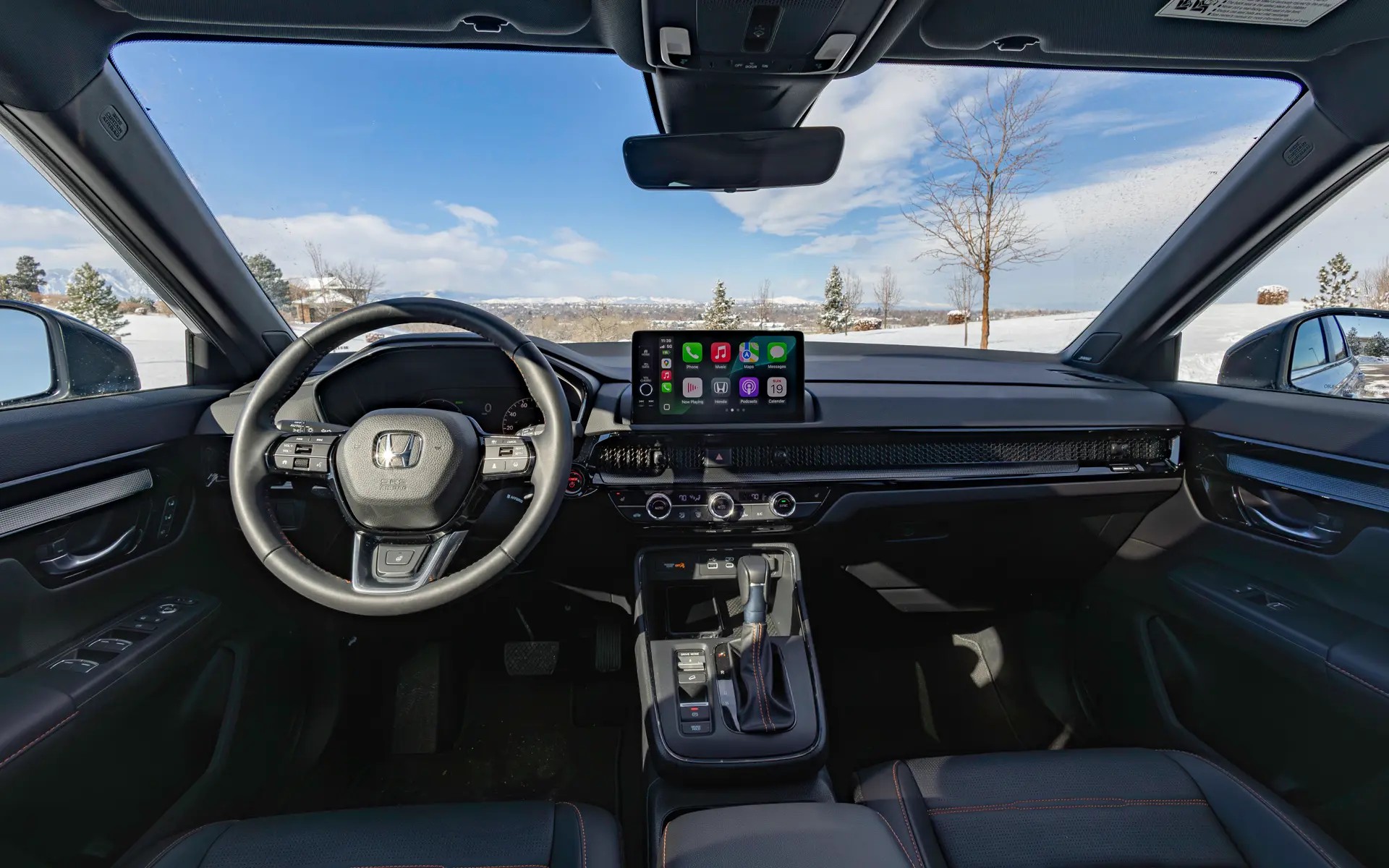 Honda CR-V Hybrid interior dashboard and steering wheel
Honda CR-V Hybrid interior dashboard and steering wheel
Interior and Technology: Practical and User-Friendly Design
As a top contender in the competitive compact SUV segment, the 2025 Honda CR-V Hybrid delivers a well-equipped interior with essential technology and user-friendly features. Even the base Sport Hybrid trim includes Apple CarPlay and Android Auto, dual-zone climate control, heated front seats, and a comprehensive suite of driver-assistance systems. Honda’s safety suite encompasses collision mitigation braking, adaptive cruise control with low-speed follow, lane keep assist, traffic sign recognition, blind-spot monitoring, and road departure mitigation.
Higher trim levels naturally add more features. The Sport-L upgrades the standard 7-inch infotainment screen to a larger 9-inch unit. While even the larger screen is moderately sized by current standards, Honda prioritizes practicality with an abundance of physical buttons for key controls. Following the design language of recent Honda models like the 11th-generation Civic and Accord, the CR-V excels in ergonomics. Buttons are logically placed and grouped, ensuring intuitive operation without searching through menus or struggling to find essential functions. The interior is designed for ease of use and immediate familiarity.
The CR-V’s interior design prioritizes functionality and spaciousness. Excellent outward visibility is provided by ample glass area, and both front and rear rows offer generous space with wide-opening doors for easy access. While the interior is well-constructed and practical, it lacks some of the stylistic flair or premium touches found in competitors. Interior trim options are limited, and advanced features like semi-autonomous driving systems or particularly large infotainment screens are not available. The focus is clearly on straightforward usability and uncomplicated functionality, which resonates well with its target audience.
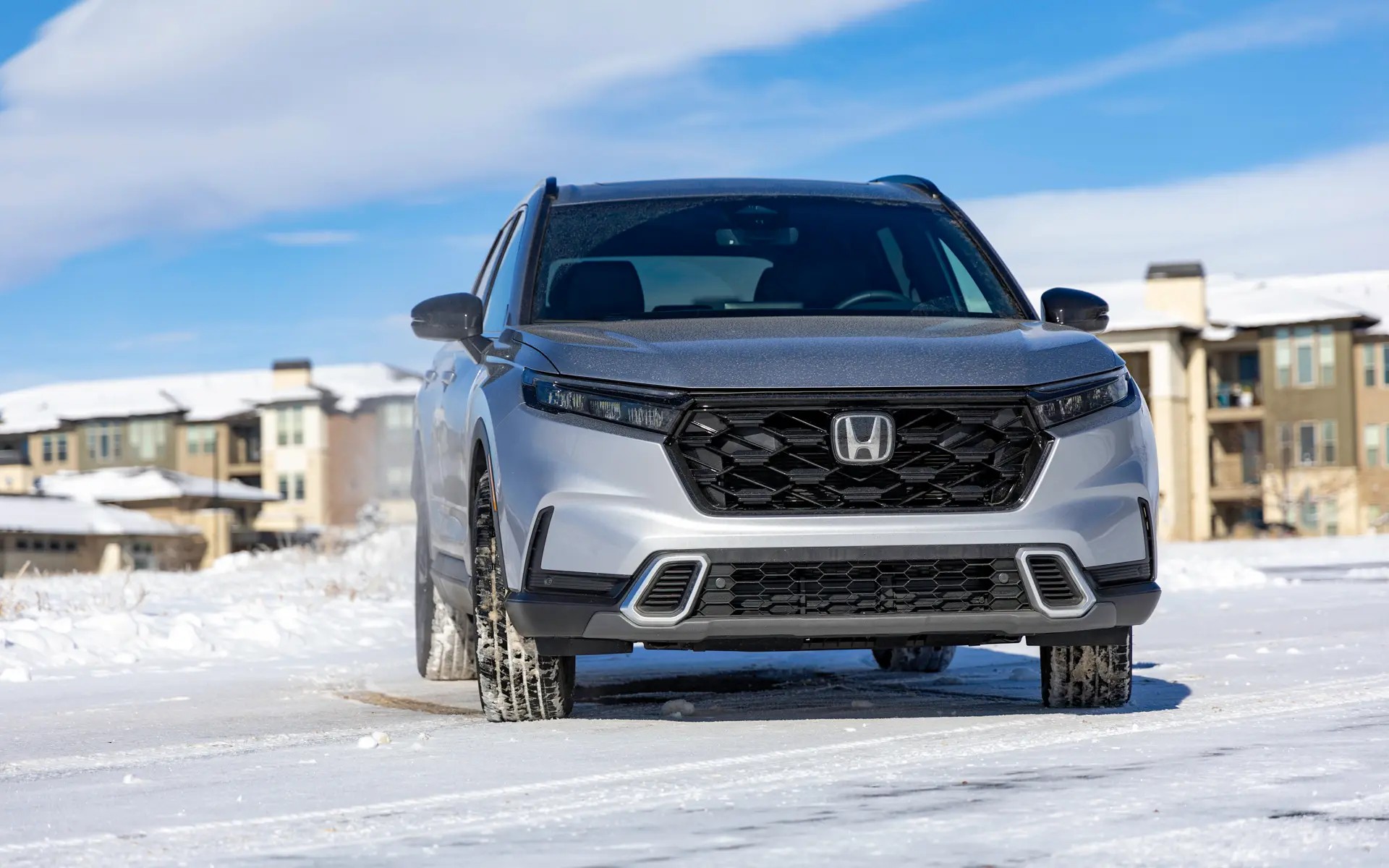 Honda CR-V Hybrid interior front seats and dashboard
Honda CR-V Hybrid interior front seats and dashboard
Verdict: The Honda CR-V Hybrid – A Top Pick in its Class
The 2025 Honda CR-V Hybrid consistently receives positive reviews from both automotive publications and owners, highlighting its strengths as a practical and well-rounded compact SUV. From its appealing styling and spacious, comfortable interior to its impressive feature set and excellent fuel efficiency, the CR-V Hybrid checks nearly all the boxes for a daily driver in this segment. If you’re considering a hybrid SUV, the CR-V Hybrid should undoubtedly be on your shortlist and warrants a test drive, especially if towing is not a primary concern.
However, potential buyers should be mindful of the price. The top-tier Sport Touring trim, with an MSRP starting above $42,000, can become quite expensive with premium paint options and accessories. While the upgraded Bose audio system and heated steering wheel are desirable features, their added value compared to the Sport-L trim may be questionable for some buyers.
Choosing front-wheel drive over all-wheel drive on the base Sport Hybrid and Sport-L Hybrid trims can save you around $1,500. Front-wheel drive models also achieve slightly better fuel economy, with a combined EPA rating of up to 40 mpg compared to 37 mpg for AWD versions. For optimal value and efficiency, the Sport-L trim with front-wheel drive represents a compelling option, offering a well-equipped and fuel-efficient daily vehicle at around $39,000.
